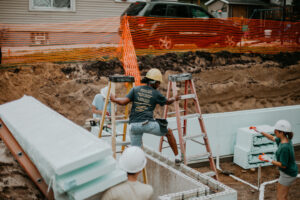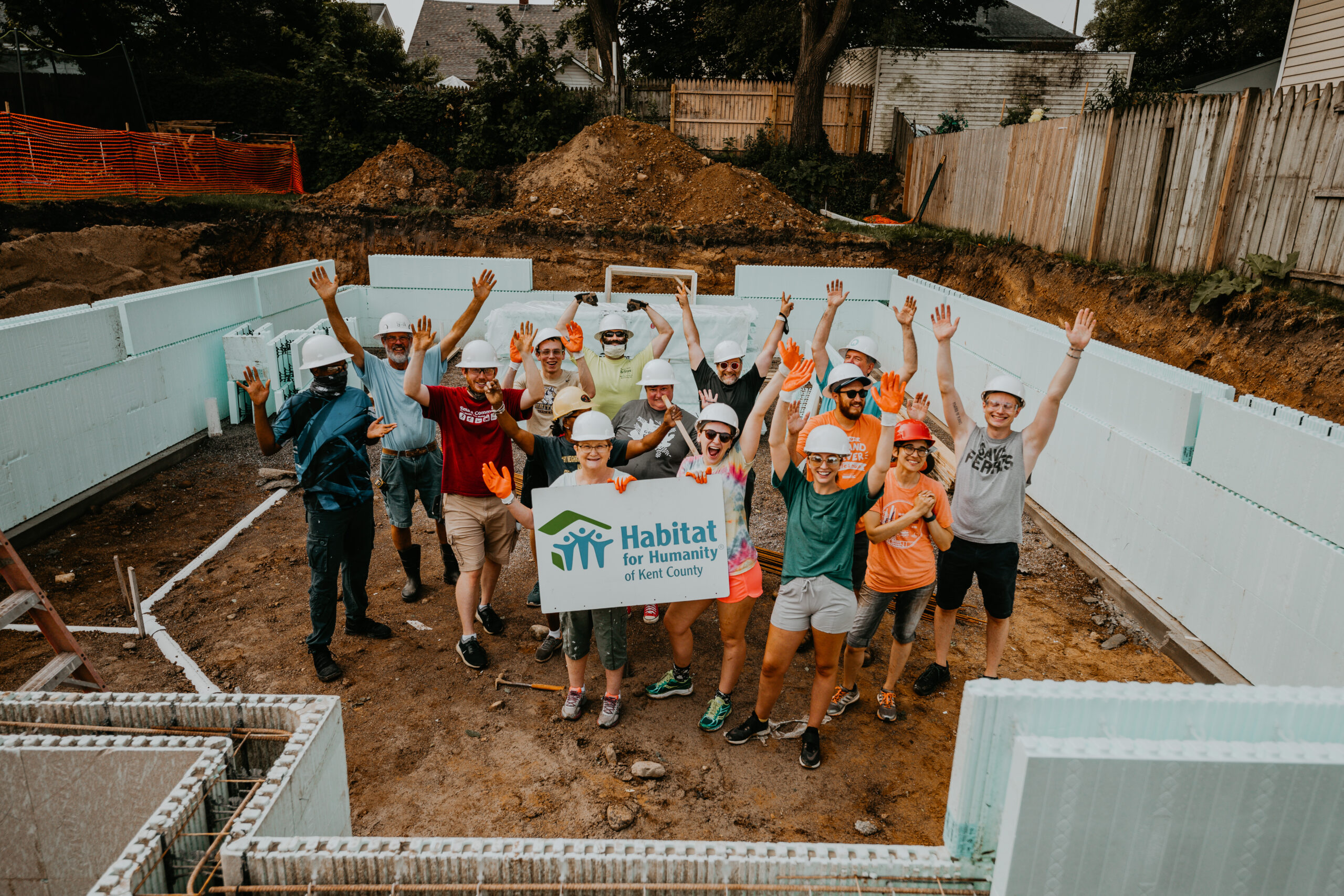Written by: Anna Watson, Crane Foundation Endowed Water Fellow
Habitat for Humanity’s (Habitat) vision is to create a world where everyone has a decent place to live (Habitat for Humanity, 2022). And now they are working to build homes in a way that is sustainable and environmentally friendly. In 2006, Habitat for Humanity of Kent County built their first Leadership in Energy and Environmental Design (LEED) certified home, and since then all of their builds have been LEED-certified. LEED is currently the most well-recognized green building rating system in the world. LEED-certified buildings are some of the most energy-efficient, water-saving, and environmentally-friendly.
Habitat’s Carbon Footprint Build has multiple features that make the homes more energy efficient. According to Mark Ogland-Hand, the Senior Donor Relations Specialist at Habitat for Humanity of Kent County, “The goal of the Carbon Footprint Build is to study both the embodied and operational carbon footprint so that we can consciously make better decisions in the future.” First, the foundation of the home is constructed using lego type foam blocks that are later filled with concrete. The foam blocks provide insulation for the home, so that less energy is needed to heat or cool the house depending on the season. This is both better for the environment and more cost-effective for the resident.

Photo credit: Michigan Environmental Council
Second, air source heat pump (ASHP) technology is used in the home. Ogland-Hand describes ASHP as “an air conditioner that works both ways.” It removes warm air from the home and pumps it outside in the warmer months while taking heat energy from the outside and pumping it into the home during cooler months. The pumps have proven to be functional in air temperatures as low as -13 degrees Fahrenheit. ASHP allows the homes to be effectively heated by electricity, which means that as fuel sources for the grid become more environmentally friendly, the homes will become more “green.” Even using power from the current grid, the ASHP has a 22% smaller operational carbon footprint than current high-efficient gas furnaces, which Habitat has used in the past. Once constructed, the Carbon Footprint Build produces zero carbon emissions, discounting the emissions from fueling the energy grid.
Recently, West Michigan Environmental Action Council (WMEAC) was able to donate eight low-flow toilets to Habitat for Humanity of Kent County that were left over from the Rainy Day Contest in 2019. WMEAC’s Rainy Day Project serves routinely-underserved communities in the City of Grand Rapids. The goal is to provide education, training, and support to improve health and safety through the implementation of green stormwater infrastructure (GSI) and water conservation practices in four Southeast/Southwest neighborhoods in the City.
Habitat’s goal is serving all communities by providing affordable housing. Partnering with them helps individuals find an affordable place to call home. Low-flow toilets use significantly less water than traditional toilets, which in turn reduces water utility bills. The donated toilets will use about 0.8 of gallons per flush, while standard toilets average 1.5 gallons per flush. Seven of these toilets will be installed into three Carbon Footprint Build homes in 2022. The families residing in the new homes will have lower water utility costs each month thanks to these water conserving toilets.
This was not the first time WMEAC has partnered with Habitat for Humanity of Kent County. In 2016, Bill Wood, WMEAC’s Executive Director, came to West Michigan from Habitat for Humanity of the Greater Harrisburg Area (Dauphin and Cumberland Counties, PA) where he served as the Executive Director and an expert in home building materials recovery. In 2019, WMEAC assisted Habitat with their building materials recovery program, to help streamline how used building materials that would be otherwise thrown away could be salvaged and sold through the ReStore to fund affordable housing programs. Building material reuse reduces both energy costs of creating new materials and the amount of waste entering the landfill. In addition, last year, WMEAC staff and partner Michigan Environmental Council (MEC) participated in a Habitat Carbon Footprint Build. This team-building event was beneficial to strengthening organizational partnerships, and it was a fun way for the WMEAC team to give back to their community.
Photo credit, top photo (banner): Habitat for Humanity of Kent County.


